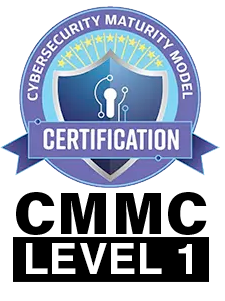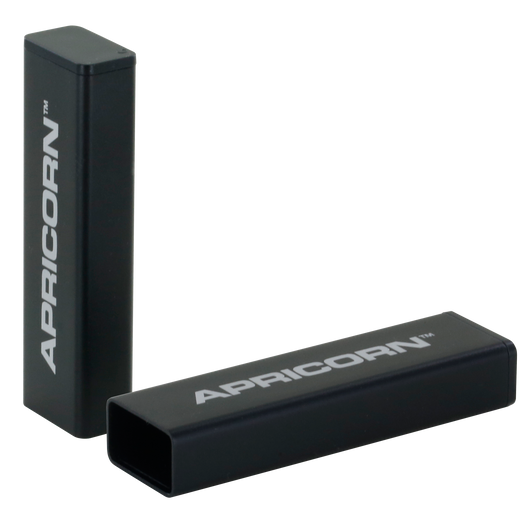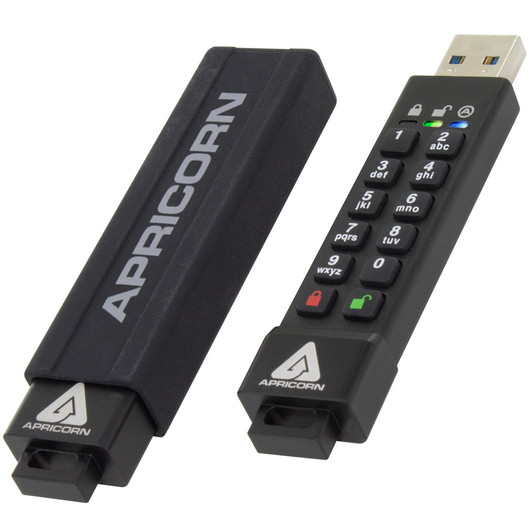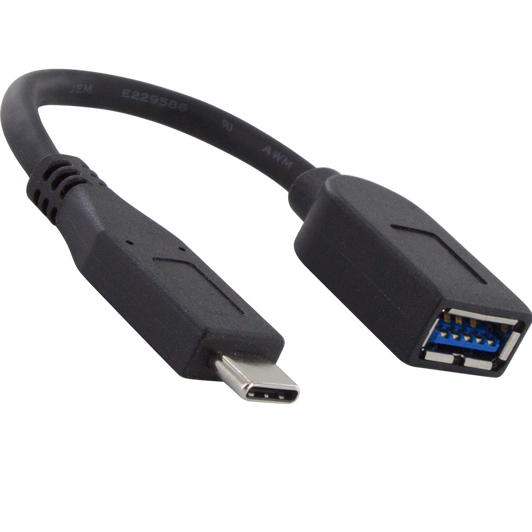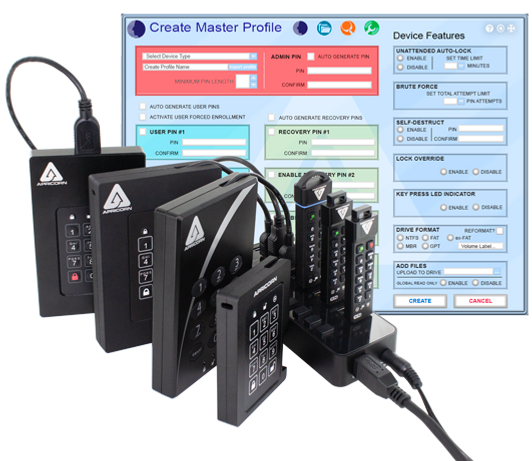The first encrypted USB flash key to feature a C connector. Software-Free, 100% hardware-based 256-bit AES XTS encrypted, onboard keypad PIN authenticated, and high speed USB 3.2 (3.0) data transfer speeds. All Data is encrypted on the fly and the device’s PINs and Data remain encrypted while the drive is at rest. Completely cross-platform compatible and OS agnostic; thrives in Windows, Linux, Mac, Android, Chrome, embedded systems, and equipment possessing a powered USB port and storage file system. All internal componentry is protected from physical tampering with a layer of hardened epoxy, and locked-down firmware brings immunity to malware attacks such as BadUSB.
If the device is showing a solid blue/green LED combination then there is no Admin PIN set. An Admin PIN must be established prior to unlocking and using the drive. Follow steps in the product Quick Start Guide for ‘First Time Use’ to set an Admin PIN and begin using the drive.








